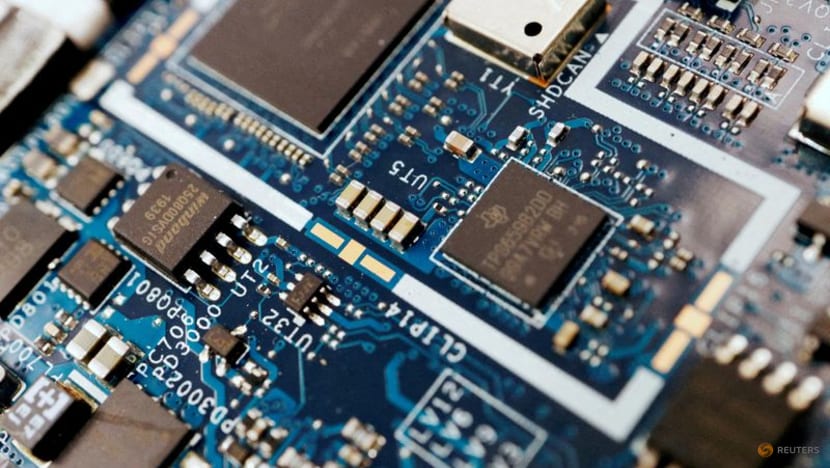China slams US 'bullying' over new chip export controls
Nvidia CEO Jensen Huang said US export controls on AI chips to China were "a failure".

Semiconductor chips are seen on a circuit board of a computer in this illustration picture taken Feb 25, 2022. (File photo: REUTERS/Florence Lo)
BEIJING: Beijing condemned on Wednesday (May 21) new US warnings on the use of AI chips made in China, vowing it would take steps against "bullying" efforts to restrict access to high-tech semiconductors and supply chains.
Washington has sought in recent years to curb exports of state-of-the-art chips to China, concerned that they could be used to advance Beijing's military systems and otherwise undermine American dominance in AI.
US President Donald Trump's administration last week rescinded some export controls on advanced computing semiconductors, answering calls by countries that said they were being shut out from crucial technology needed to develop artificial intelligence.
Some US lawmakers feared the restrictions would have incentivised countries to go to China for AI chips, spurring the superpower's development of state-of-the-art technology.
But Washington also unveiled fresh guidelines warning firms that using Chinese-made high-tech AI semiconductors, specifically tech giant Huawei's Ascend chips, would put them at risk of violating US export controls.
In a statement Wednesday, Beijing's commerce ministry described the warnings as "typical unilateral bullying and protectionism, which seriously undermine the stability of the global semiconductor industry chain and supply chain".
China accused the US of "abusing export controls to suppress and contain China".
"These actions seriously harm the legitimate rights and interests of Chinese enterprises and endanger China's development interests," the commerce ministry said.
It also warned that "any organisation or individual that enforces or assists in enforcing such measures" could be in violation of Chinese law.
And it vowed to take "firm steps to safeguard its legitimate rights and interests" in response.
The United States warned last week about the potential consequences of allowing US AI chips to be used for training Chinese AI models.
The commerce department said its policy was aimed at sharing American AI technology "with trusted foreign countries around the world, while keeping the technology out of the hands of our adversaries".
Previous US rules divided countries into three tiers, each with its own level of restrictions.
Top-tier countries like Japan and South Korea faced no export restrictions, while countries in the second tier, which included Mexico and Portugal, saw a cap on the chips they could receive.
EXPORT CONTROL "A FAILURE": NVIDIA CEO
Chipmakers including Nvidia and AMD lobbied against the tiered restrictions and saw their share prices rise when the Trump administration indicated it would rethink the rule.
Nvidia CEO Jensen Huang, speaking at the annual Computex event in Taipei, said US export controls on AI chips to China were "a failure".
"All in all, the export control was a failure," Huang said, adding that "the fundamental assumptions that led to the AI diffusion rule in the beginning, in the first place, has been proven to be fundamentally flawed".
He added that companies are using locally developed cutting-edge technology.
"The local companies are very, very talented and very determined, and the export control gave them the spirit, the energy and the government support to accelerate their development," Huang said.
"China has a vibrant technology ecosystem, and it's very important to realise that China has 50 per cent of the world's AI researchers, and China is incredibly good at software," Huang said.
Huang also praised China-based DeepSeek, saying it had been positive for AI infrastructure and "increased the amount of computing need by maybe 100 to 1000 times".
"That's the reason why all over the world, the AI companies are saying their GPUs are melting down," Huang said.
DeepSeek shook up the world of generative artificial intelligence with the debut of a low-cost, high-performance model that challenges the hegemony of OpenAI and other big-spending behemoths.















